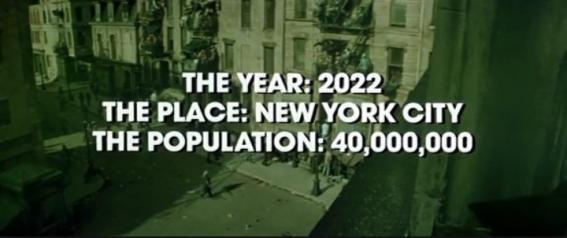It wasn’t enough that Lyft and Uber introduced the world to the concept of taxi and limousine drivers committing suicide, we now have Lyft and Uber drivers committing suicide. In other words, it’s not enough that the business models of these companies are suicidal, they are actually visiting suicide upon their non-employees.

But what if the business model isn’t about providing transportation? What if the real objective of Uber and Lyft is population reduction – like Soylent Green?
Terrifying and saddening though it may be to see taxi and limousine drivers commit suicide after finding – post-Uber/Lyft – that they could no longer afford to pay off either their expensive taxi medallions or their vehicles or their mortgages, it was nevertheless understandable. It was even understandable when drivers for Uber in India committed suicide after Uber over-promised regarding their likely compensation causing some of these drivers to over-commit to buying new cars.
The reason the drivers in India suddenly found themselves in a financial bind was that Uber over-recruited drivers tilting the driver-demand balance toward an unbearable compensation level for the drivers. By the time the drivers realized their quandary, it was too late. That experience was several years ago, but now we are seeing Lyft drivers in the U.S. committing suicide in the midst of a heated battle over a regulation requiring that Lyft pay drivers a minimum wage.
Lyft is resisting the implementation of the new regulation in New York after the negative impact the minimum wage had on fares – driving them up and driving away passengers. As reported in TechCrunch: “These rules legally went into effect in February. Since then, Lyft says there has been a negative impact on driver earnings. That’s because, Lyft says, the cost for passengers increased 24%, which led to rides dropping 26% and driver earnings dropping 15%. Lyft had to then take “action to stabilize the market largely through the use of passenger discounts. We won’t do this forever, but knew it was important for both the driver community and Lyft while the lawsuit progressed.”
No doubt Lyft also reduced fares to maintain market share in the face of closer scrutiny in advance of its initial public offering. The bottom line is that the New York minimum wage requirement was the last Jenga block the removal of which brought down the Lyft-Jenga tower.
The simple reality is that Lyft and Uber can’t afford to pay drivers a minimum wage or the entire business model collapses. But maybe that’s not the purpose of Uber and Lyft and Ola and Yandex and Gett. Maybe the entire purpose of these services is to reduce surplus population.
Imagine a distopian present where there is a surplus of drivers in a world that is shifting toward driverless cars and mass transportation. Government organizations, given the task of reducing the growing ranks of this restive population, cook up a scheme to put more of them in the business of providing ad hoc transportation than the market can bear.
Soon packs of roving “drivers” begin derailing trains and running over bike and scooter users in order to drive more business into their itinerant taxis. Before long, demand for cars begins to grow again as non-drivers see the error of their ways and get back in cars – either their own or as Lyft and Uber passengers. This, of course, exacerbates the driver surplus problem with Purge-like consequences as mayhem ensues.
Suicides committed by taxi and limousine drivers – even one – ought to have been enough to open the eyes of regulators and legislators to the inequity and untenability of ride hailing in its current form across the world. The fact that ride hailing drivers – even one – might have committed suicide ought to have been the final straw. The business model simply does not hold water. There is no alternative revenue track like in-vehicle search or advertising that is sufficient to replace existing driver compensation structures. Lyft has become Soylent Green.
There is one path out of this transportation network company-driven mess. One company has solved this riddle and is fighting for its non-profit corporate life. Ride Austin is a TNC non-profit in Austin that thrived in a post-Uber/Lyft environment before the two companies were allowed back into the local market last year. It just may be that the ride hailing business was intended to be a non-profit proposition. Don’t tell that to Lyft investors.
Share this post via:







Quantum Computing Technologies and Challenges